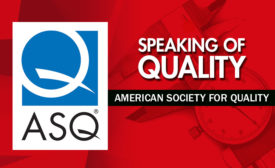Home » culture of quality
Articles Tagged with ''culture of quality''
NDT | Ethics
A whistleblower shares his story.
Read More
Fellow Traveler | Daniel Zrymiak
Influence Without Authority with Stature
People respond positively to trust and confidence, and this builds a momentum of successful collaboration.
December 27, 2023
From the Editor | Darryl Seland
Maps Have Been Helping Us for a Thousand Years
They've been helping us get where we are going for a thousand years.
June 15, 2023
Quality 101
Building Blocks to Improve Organizational Culture
Lay out a road map to achieve organizational excellence and build a culture around it.
May 30, 2023
Face of Quality | Jim L. Smith
Organizational Culture
Workplace culture takes work but delivers value
April 8, 2021
Speaking of Quality | Kathy Lyall
Culture of Quality
Do employees "live" quality in all of their actions?
August 3, 2020
Sponsored Content
How to Leverage QMS Software to Promote a Culture of Quality
October 25, 2019
A New Year, A Solid Career
As you examine your future in quality, keep these items in mind.
January 15, 2019
Sponsored Content
What Can Go Wrong, Will Go Wrong: Learnings From Quality Case Studies
July 30, 2018
Two Doors and the Culture of Quality
Which do we choose, and more importantly, how?
December 14, 2017
Stay in the know with Quality’s comprehensive coverage of
the manufacturing and metrology industries.
eNewsletter | Website | eMagazine
JOIN TODAY!Copyright ©2024. All Rights Reserved BNP Media.
Design, CMS, Hosting & Web Development :: ePublishing













